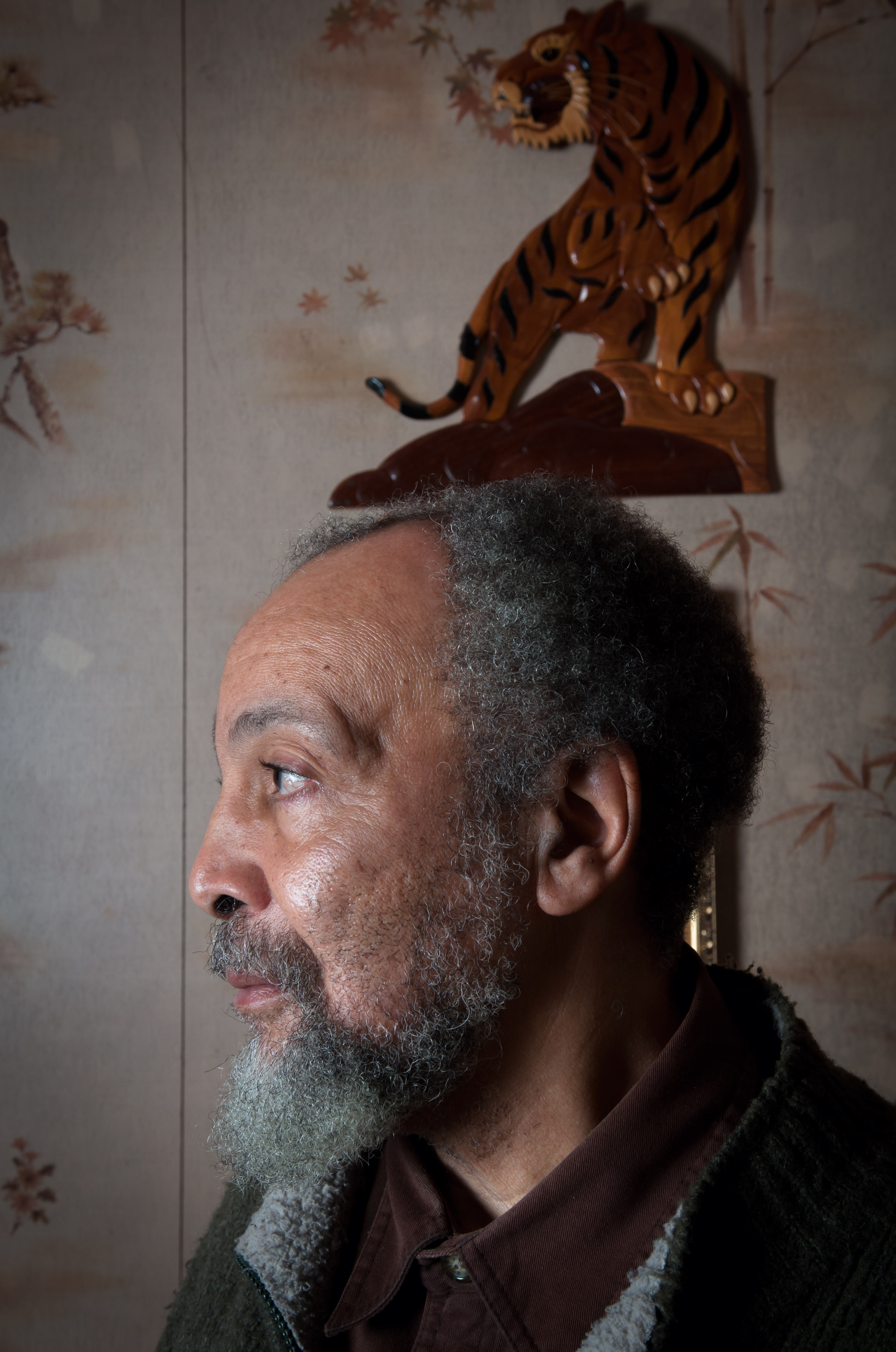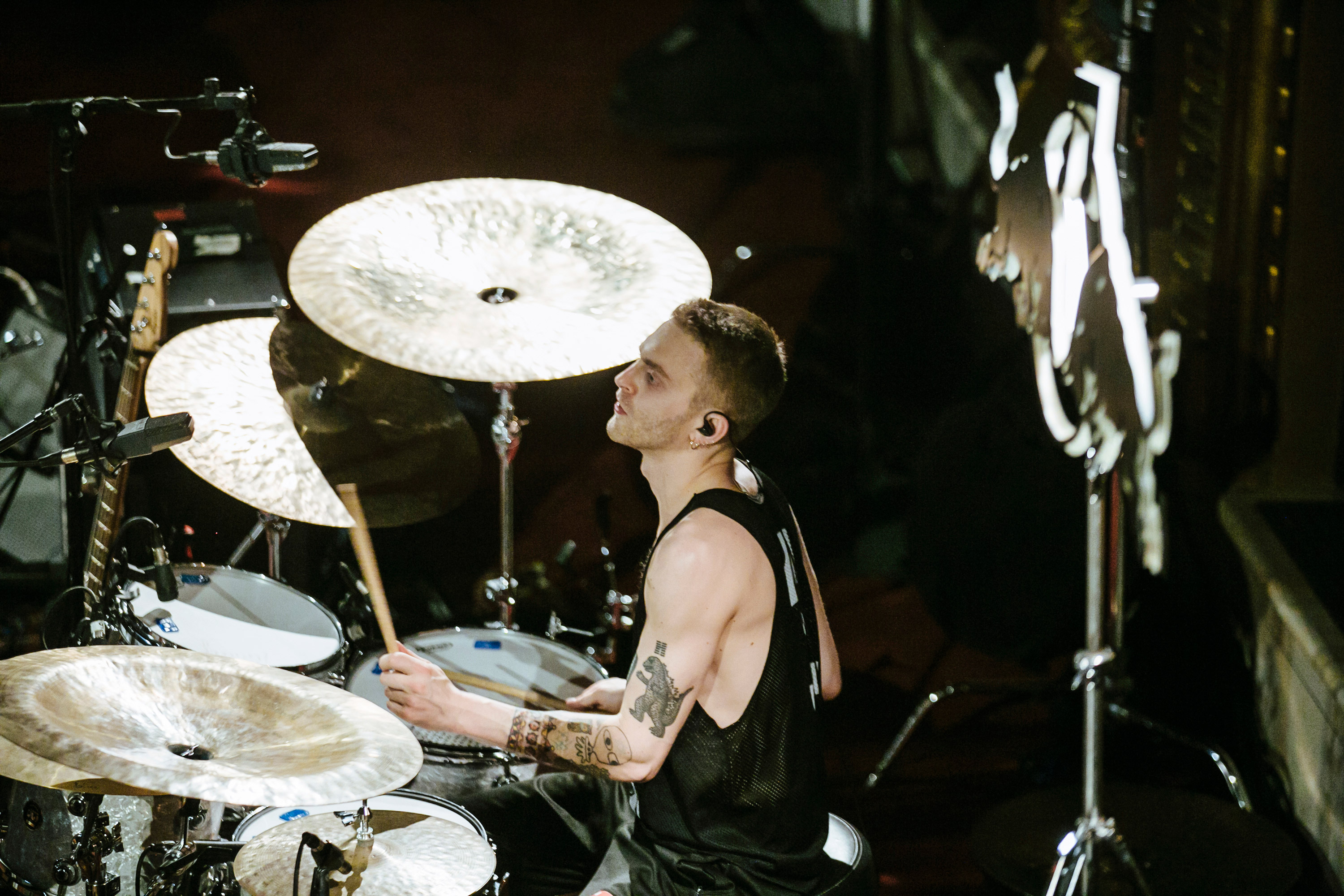Greg Fox on the Future of Drumming
The future-facing percussionist talks to Harley Brown
Born and raised on either side of Central Park, Greg Fox infuses his drumming with the relentless energy of his hometown. A practitioner of the rapid-fire percussive stroking known as the Moeller technique, the multidisciplinary artist and teacher is also an avid explorer of new technologies and electroacoustic possibilities.
In this excerpt from an interview with Harley Brown for RBMA Radio’s New York City spotlight, The Slice, Fox – a solo artist and member of ensembles including Liturgy, EX EYE, Guardian Alien, Zs and more – introduces a new track he’s been working on, defines Sensory Percussion and explains how he turned his heart’s rhythms into song.
Musicians will really have a universal amount of options of expression [because of Sensory Percussion].
So this song you just played, working title “commsrack_,” has been in the works for about a year. What did you use to make it?
I’m working with this new technology that a friend of mine developed called Sensory Percussion and so as I’ve gotten more comfortable using it and more acquainted with it, the walls have gotten sort of further and further away, as far as the possibilities inherent in the material that I’ve been working with. It’s been evolving.
You’re approaching the singularity is basically what you’re saying.
It feels like it. It kind of does feel like it. It’s weird. It’s like all the possibilities of things I wanted to do bringing the computer and the drums together in a very fluid way, all becoming available at once. It’s been really cool and challenging and it’s really affected the way I think about just communicating with the drums in general as an instrument.
Can you describe it a little bit for the listeners?
I can describe it to a certain degree. Basically Sensory Percussion uses machine learning algorithms to differentiate between tambours produced on a single drum, and then it turns that drum (and set) into an extremely versatile, capable, MIDI controller. It’s not a trigger system where you hit a drum and it sends an on/off signal to a brain or to a computer, which basically just makes one sound in varying degrees of volume depending on how hard you’re hitting it.
It’s more sending a signal that can be interpreted by the software to, for example, control the parameters of an effect or blend between different sounds depending on where on the drum you’re hitting.
This is all based on machine learning algorithms which otherwise, in the context of music, are not really being utilized in this kind of way at all. They’re being utilized in the exact opposite way, which I would argue is somewhat threatening to the musician. Right now, they’re basically generating computer music for people based on algorithms that determine what kind of things they would like to listen to.
To be honest, I can’t talk about it as well as Tlacael Esparza, who created it. It is an extremely revolutionary system for drummers and, eventually, all musicians as it extends to other instruments. Musicians will really have a universal amount of options of expression as far as translating the ideas you have.
Does this stem back to when you worked with Milford Graves on Mitral Transmissions, which was an album based on heart software and sensors that he had set up in his house in 2014?
There is a relationship there as far as bridging a gap, I think, between the electronic, digital, and the analog. Drums are the original instrument and they are the source of –
Some people might say that voice was the original instrument.
Well, fair, but you could also say that the heart is a drum.
Also fair.
Ultimately it’s not about which came first. It’s from the body. The body is the original instrument and I’m sort of sitting here between two people on my shoulder who could express it much better than me, Milford and Tlacael.
You’re doing a pretty good job.
Well I’m trying. Thanks. I appreciate it. For me it’s about the drums not being relegated to this place of just keeping time in the back of a group of people who are playing a song that happens in a linear fashion from start to finish. It’s about the drums being an expression of rhythm and melody and ultimately a source of communication and conversation, which I think is really their original purpose.
With regards to the stuff I did with Milford for Mitral Transmission, that was using a technology and software that Milford had developed to convert high quality recordings of the heartbeat into something listenable beyond just the lub dub that everybody imagines the heart to sound. It basically expresses all the other electrical impulses that happen in between the lub and the dub, which is a lot. It’s basically amplifying that to express all that’s actually at play within the heart. The other thing that we did was we converted that recording to a MIDI score, an extremely rich MIDI score. I used that MIDI score to compose a lot of music, a small amount of which came out on Mitral Transmission.
I think, maybe, the real connection there, is that it’s about using technology to help express something very human. We’re at an interesting period in time because there’s so much that the computer allows us to do, but there are so many ways in which we all become tethered to it. I don’t want to say controlled by it. It’s not about the computer or technology wrapping itself around the human in a way that enhances the human. We had to wrap ourselves around the machine a little bit. These technologies, like what Milford’s working on or Sensory Percussion, bend it back our way. At least that’s how it feels to me.
Can you can say anything about your next solo record? When is it coming out?
With regards to the solo work, I don’t know when it’s coming out quite yet. I’m using Sensory Percussion pretty exclusively. Everything is going to be recorded in one take. Right now, I’m interested in exploring sound as a spatial element and as architecture.
The music, to me, is very visual. It’s not really writing songs, it’s more descriptions of space.
The more time I spend working on it, the more conceptual it’s gotten. I have some reservations about that, just because I don’t want to alienate anybody. Not that that’s my main concern, I want to make something that I feel good about – and I do feel good about what I’m making – but it’s new territory.
I’m kind of learning how to talk about it while I make it. I feel like I’ve been building something that I didn’t have any way to describe before. It feels like the music is a description of a landscape with objects and structures placed throughout and they become animated through an exploration of the space. The means of exploration is the gesture, my gesture with my hands on the drum. It definitely has this VR feeling to me when I’m listening to it and when I’m making it. It feels like I’m wearing a VR headset and I can see the things animating in the field.
Like I said, it’s just a matter of putting blinders on with work like this. It’s not something where it’s like, “That’s the verse. That’s the chorus. Here are the lyrics. Duh-duh-duh.” I don’t do that. It’s way more amorphous.

